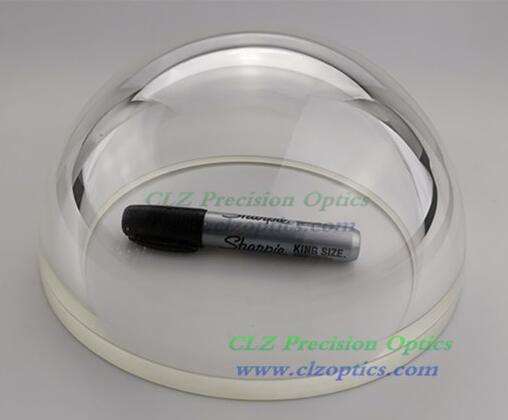An overview of Fused Silica
Fused Silica
Fused silica is amorphous silicon dioxide. It can be obtained e.g. by melting silica powder such that the grains are fused together, and cooling it down fast enough to avoid crystallization. Fused silica in a more or less purified form belongs to the most important optical glasses, or more generally optical materials, both for a wide range of bulk optical components and in fiber optics.
There is also a variety of silicate glasses, which have fused silica as their main component but contain additional substances such as soda, alumina, germania or lime. They generally have much lower glass transition temperatures and also differ from pure silica in many other respects, e.g. in terms of the transparency range and the thermal expansion coefficient.
Fused silica is sometimes called fused quartz or quartz glass. However, it should be kept in mind that it is an amorphous material, while quartz is crystalline. (When lamps are said to have a quartz envelope, it is always fused silica; the same holds for most “quartz tubes”.) Other common names are silica glass and vitreous silica.
While silica has a very wide range of industrial and other applications, this article focuses mainly on optical properties and applications.
Key Properties of Fused Silica
Fused silica has several remarkable features both concerning its mechanical, thermal, chemical and optical properties:
◬It is hard and robust, and not too difficult to machine and polish. (One may also apply laser micromachining.)
◬The high glass transition temperature makes it more difficult to melt than other optical glasses, but it also implies that relatively high operation temperatures are possible. However, fused silica may exhibit devitrification (local crystallization in the form of cristobalite) above 1100 °C, particularly under the influence of certain trace impurities, and this would spoil the optical properties.
◬The thermal expansion coefficient is very low – about 0.5 · 10−6 K−1. This is several times lower than for typical glasses. Even far weaker thermal expansion around 10−8 K−1 is possible with a modified form of fused silica with some titanium dioxide, introduced by Corning [4] and called ultra low expansion glass.
◬The high thermal shock resistance is a result of the weak thermal expansion; there is only moderate mechanical stress even when high temperature gradients occur due to rapid cooling.
◬Silica can be chemically very pure, depending on the fabrication method (see below).
◬Silica is chemically quite inert, with the exception of hydrofluoric acid and strongly alkaline solutions. At elevated temperatures, it is also somewhat soluble in water (substantially more than crystalline quartz).
◬The transparency region is quite wide (about 0.18 μm to 3 μm), allowing the use of fused silica not only throughout the complete visible spectral region, but also in the ultraviolet and infrared. However, the limits substantially depend on the material quality. For example, strong infrared absorption bands can be caused by OH content, and UV absorption from metallic impurities (see below).
◬As an amorphous material, fused silica is optically isotropic – in contrast to crystalline quartz. This implies that it has no birefringence, and its refractive index (see Figure 1) can be characterized with a single Sellmeier formula.

评论
发表评论